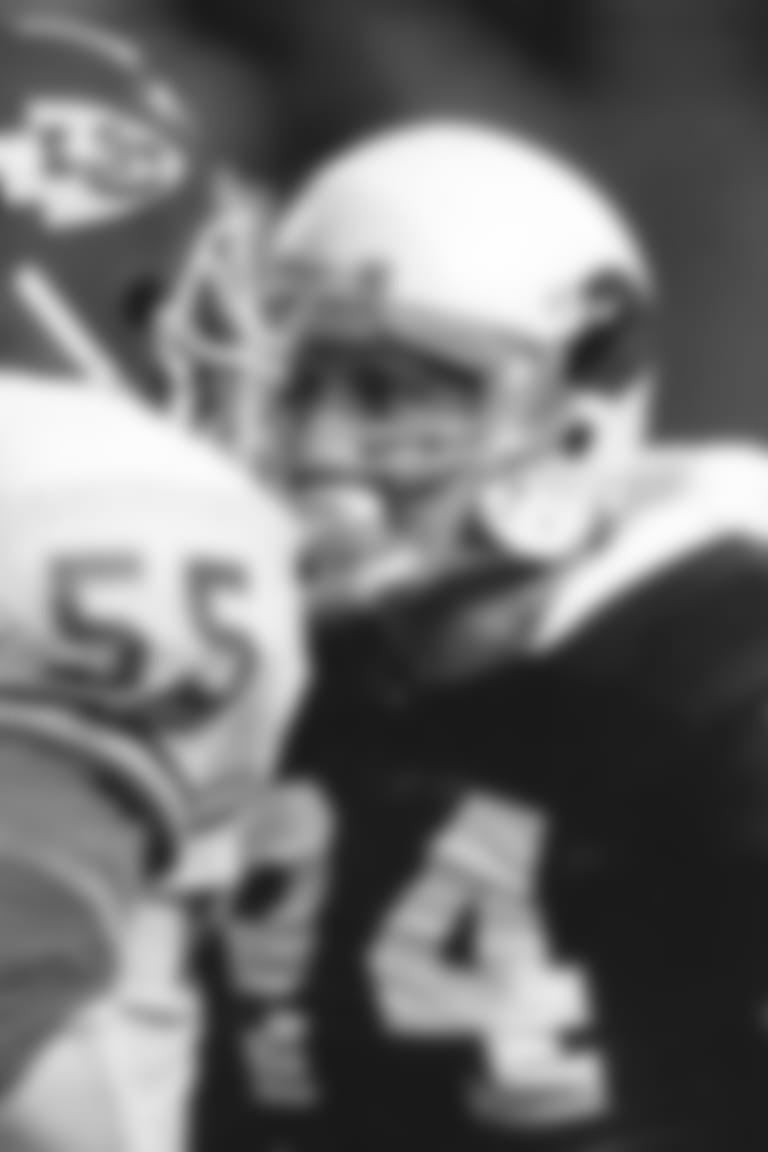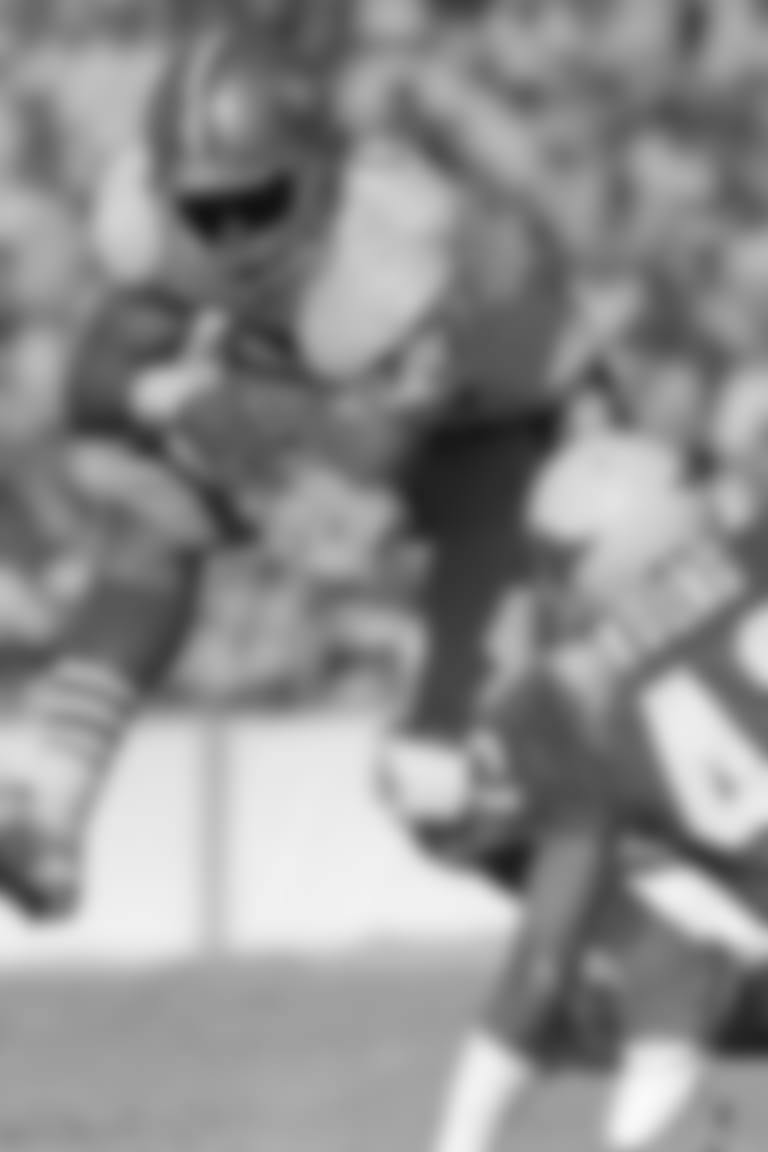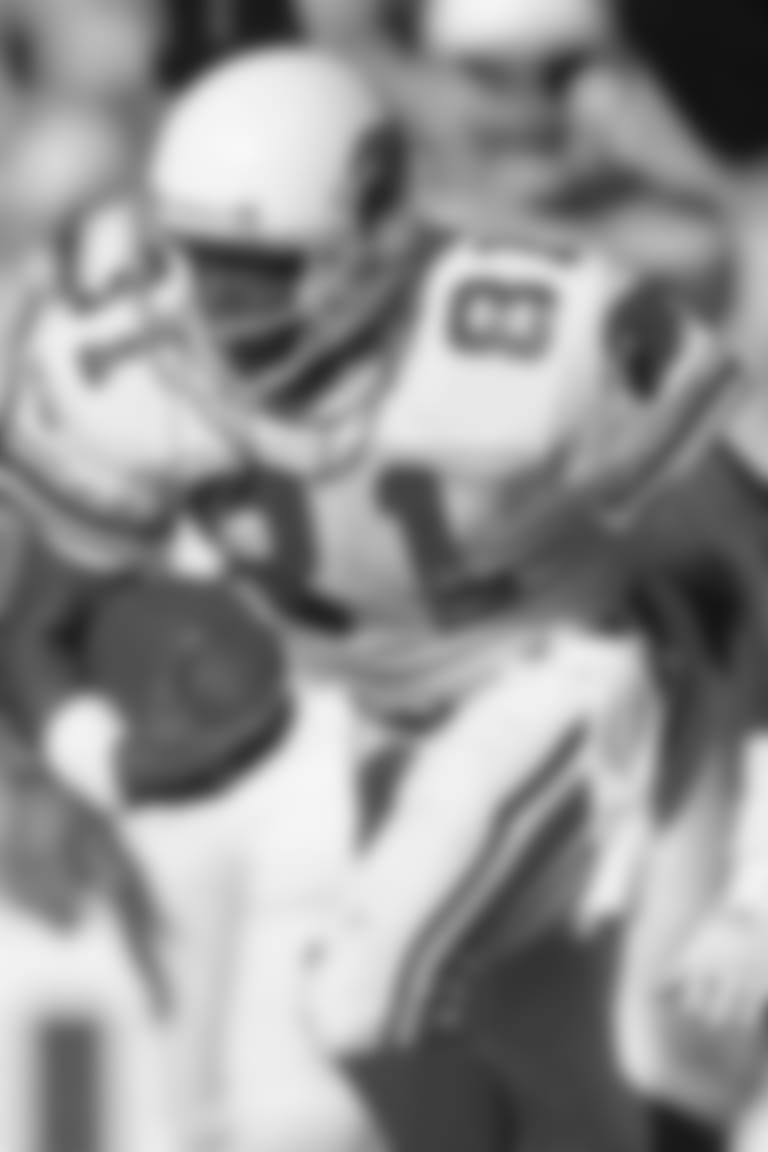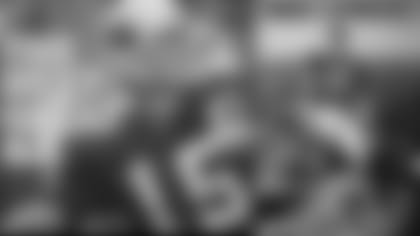People were already leaving in the third quarter, and that incensed Wolfley. The sidelines at Sun Devil Stadium back up to a fence, with a dropped down walkway running alongside the stands.
"I remember I got up and hung over the fence for the first and only time of my NFL career," Wolfley said. "And I was yelling at (the fans), 'You're gonna miss the greatest comeback in this history of this team!'
"Even as I walked away from yelling at these people that we were going to come back and win this game, I knew how stupid it was."
Stupid, perhaps. But eventually proven correct.
Lomax and Green had long had an excellent relationship. When Lomax was a rookie, Green would invite him over to his house in St. Louis once or twice a week, and the bond was developed.
By the time the Cardinals got to Phoenix, Green's days as a two-way star – he played cornerback when he got to the NFL as well as receiver – were done, but his production wasn't. His nickname "Jet Stream" still meant something down the field. It definitely did on a 35-yard Lomax-to-Green TD pass to finally et the Cardinals on the board the next drive.
"We could have easily been down two more touchdowns," Green said. "But our defense stopped them in the red zone twice and forced field goals. We were like 1-for-13 on third-down conversions. It's like, 'They won this game?'"
The Cardinals added a Del Greco field goal, but the scoring dried up until about four minutes left in the game, when Wolfley's prediction was at peak vulnerability.
Yet it only took 1:52 off the clock for the Cards to go 50 yards for a touchdown, Indiana Jones hauling in a 5-yard pass for the score and giving the faithful fans hope.
"I haven't seen the game in a long, long time," Lomax said. "Someone put it up on YouTube about 10 years ago at a function I was at. And you know, I was kind of getting goosebumps and was kind of like, 'Damn, man, we came back.'"
The Cardinals needed a three-and-out. They got it with one of the most memorable defensive plays since the team moved to the Valley. On third-and-4 at the San Francisco 21, Young kept the ball himself getting to the sideline and the first-down marker at the same time as Cardinals linebacker E.J. Junior.
The ball was spotted just short, much to the anger of Young and coach Bill Walsh. It was reviewed as upheld, and the 49ers had to punt the ball back to the Cardinals with 1:27 left.
"It was short," Wolfley said.
The Cardinals were on their own 34, an upset for the taking.
"We were very good at the hurry-up," Green said. "That's kind of what Lomax was about when he was at Portland State. We all communicated very well."
The Cardinals needed only six plays – the last a Lomax spike to stop the clock at six seconds – to get to the San Francisco 9. Lomax, who had been sacked seven times in the game, was never close to being touched on the drive. Smith had two catches for 17 yards, Jones had two for 40, including a 25-yarder on third-and-2 to set up the last play.
To win the game, Green was the obvious choice.
"Roy basically called that play," Lomax said. "He knew they were going to blitz. They call timeout. We come to the sideline and he goes 'They're coming. Put me in the slot.'
"They brought Cover Zero. They had a little corner on Roy, Roy makes a littler swim move and that beautiful move made for an easy throw."
The 64,544 fans – or at least those that stuck around, which were plenty -- saw for the first time their own version of the "Cardiac Cards," a nickname the franchise had earned a few years earlier in St. Louis for their heart-stopping ways.
"You saw us all jumping," Green said. "Me and J.T. tried to jump, you know, but we were so tired. But yeah you're excited. That's what it's about, man."
"I'll never forget the unbelievable feeling that stuff can happen," Wolfley said. "If you just believe stuff can happen and the fact it actually came to fruition, when I allow myself to think about it and it's 2:30 in the morning and the shadows are creeping across the ceiling, it feels good."


















